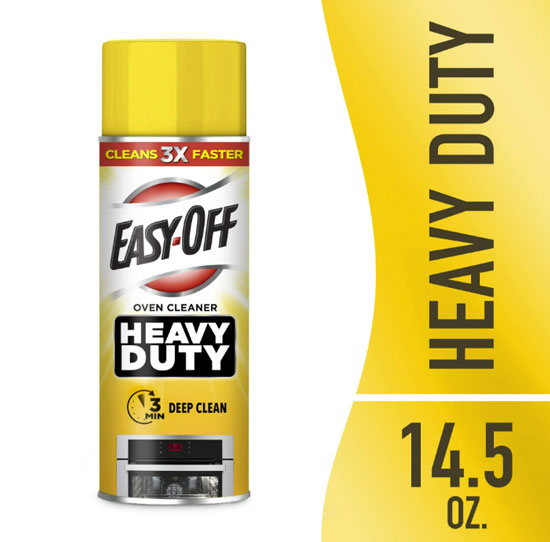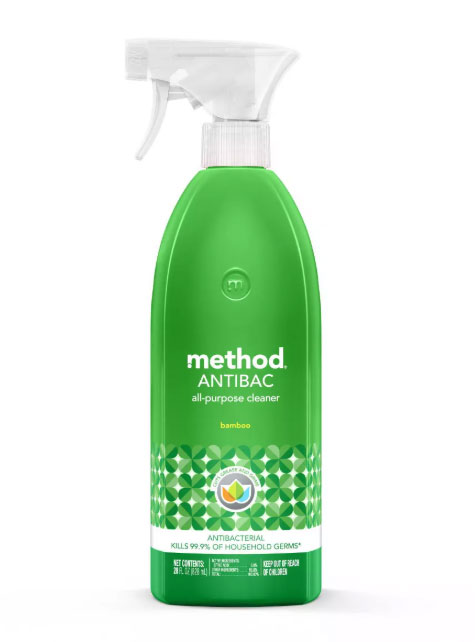Tips for choosing household cleaners, tips for cleaning can help you save time and effort!
By: actCoupons | May 15, 2025

The following key factors need to be considered when choosing household cleaners: ingredient safety, cleaning effect, ease of use and environmental protection.
Avoid stepping on thunder. I sincerely recommend that you spend more time and effort to do your homework when choosing kitchen cleaners, don't blindly follow the trend, and choose products that suit you.
How to choose a cleaner?
• Kitchen stove
The kitchen fume stains are super stubborn. Choosing some targeted stove and oven cleaners will make cleaning much easier. For example, glass or ceramic stoves can choose Weiman's cleaners, which not only remove stubborn stains, but also have a polishing effect.
Weiman Glass Cooktop Heavy Duty Cleaner & Polish

This stove cleaner from Weiman can effectively clean and polish ceramic and glass surfaces. It is absolutely a must-have kitchen cleaner that avoids friction damage to the stove surface while cleaning, and restores the surface to its original brightness. The burnt surface can also be cleaned. The usage is also very simple. Shake it evenly before use, then squeeze it on the place to be cleaned, clean it in circles with dry kitchen paper, and finally wipe it dry.
For cleaning stains on other traditional stoves or the inner wall of the oven, spray Easy Off strong cleaner, wait for 5-10 minutes, and then you can easily wipe away the stains. However, remember to pay attention to ventilation when using it, as it will produce irritating odors. PS, it is also super easy to use Easy Off to clean the filter baffle of the range hood.
Easy-Off Heavy Duty Oven Cleaner

Easy-off, the ability to remove stubborn oil stains is really super strong!
A few tips when using:
- Cover your mouth and nose when spraying.
- After spraying stubborn oil stains multiple times, leave them overnight before cleaning.
- It is faster to use a sponge soaked in hot water when cleaning.
- Be sure to wear gloves when cleaning.
• Microwave oven
After using the microwave oven for a long time, a lot of stains will accumulate inside, especially some hanging microwave ovens that also have the function of range hoods, the inside needs to be cleaned even more.
In fact, cleaning the microwave oven is very simple:
1. Efficient cleaning method
1) White vinegar cleaning method:
- Add half a bowl of water and 1 tablespoon of white vinegar to a special bowl for the microwave oven, heat on high heat for 3-5 minutes, use steam to soften the oil stains and then wipe the inner wall.
- Advanced version: simmer for 2 minutes after heating to enhance the penetration effect, and stubborn stains can be lightly brushed with an old toothbrush.

2) Lemon Cleaning Method
- Cut a lemon in half and put it in a plate with a small amount of water. Heat it for 1 minute. The citric acid will decompose the oil and remove the odor.
- Alternative: Heat the lemon peel for 5 minutes, which is suitable for removing strong fishy smells such as seafood.
2. Precautions
- Safety first: Turn off the power before cleaning to avoid water vapor short circuit; do not use steel wool or hard brush to prevent scratching the inner wall coating.
- Material protection: The glass turntable needs to be cooled before rinsing to prevent explosion.
Tips: Developing a habit of cleaning at hand can greatly reduce the difficulty of cleaning.
• Refrigerator
The temperature of the refrigerator is low, and bacteria and viruses will survive longer, so even if it does not look dirty, it may accumulate a lot of bacteria and germs over a long period of time. Take advantage of the spring cleaning to empty the refrigerator and thoroughly clean and disinfect it once, so that it is healthier to store food.

Since food is often stored in the refrigerator, it is safer to use some green cleaners, such as baking soda powder, which can be mixed with water to make a paste and used to wipe the inside of the refrigerator. It can effectively remove stains and deodorize.
1. Tool preparation
- It is recommended to use natural or mild cleaners such as neutral detergent, baking soda, white vinegar, alcohol, toothpaste, etc.
- Tools include soft cloth, sponge, small brush (to clean the seal), spray bottle, etc.
ARM & HAMMER Pure Baking Soda

Placing a small box of opened baking soda in the refrigerator can also help absorb odors and deodorize the refrigerator!
Method Antibacterial All-Purpose Cleaner Spray

If the stains are stubborn, you can use Method antibacterial cleaning spray, which contains 5% citric acid, which can kill 99.9% of common bacteria and viruses. It is suitable for cleaning the inside of the refrigerator, desktops, etc.
Precautions
- Safety tips: Turn off the power during the whole process to avoid detergent residues and wipe thoroughly.
- Frequency recommendations: Clean at least once every half a month, and wipe the seals and partitions once a week.
- Daily maintenance: Store food in sealed bags to reduce odor and bacterial contamination.
Tips: Refrigerator cleaning requires systematic operation, focusing on the seals, partitions and corners that are prone to breeding bacteria. Combining natural cleaners with regular maintenance can effectively extend the life of the refrigerator and ensure food safety.
• Stainless steel surface
Many people have kitchen appliances with stainless steel surfaces at home. They look good when they are new, but over time, they are easily left with a lot of fingerprints and other marks. Using a special stainless steel cleaner to clean can not only easily wipe off stains, but also polish to remove fingerprints and other traces, making the stainless steel appliances at home look brand new.
The core method of cleaning the surface of stainless steel is to use a special environmentally friendly cleaner combined with a mild household cleaning method
1. Common household cleaning methods
1) Warm water and soap method
Suitable for daily light stains: dissolve neutral soap in warm water, gently wipe with a sponge, rinse and dry to avoid scratches.
2) Cleaning with white vinegar or citric acid
Acidic substances can dissolve the oxide layer and scale: dilute white vinegar in a 1:1 ratio and spray on the surface, let it stand for 5 minutes and then wipe it. It is suitable for dealing with water stains and minor rust spots.
3) Toothpaste polishing
Non-gel toothpaste contains fine abrasives that can remove fingerprints and shallow stains: wipe in a circular motion after application, and then rinse it clean.
Weiman Stainless Steel Cleaner, 12 fl oz

Weiman Stainless Steel Cleaner & Polish Streak Free. Formulated to clean, shine and protect stainless steel. Removes fingerprints, smudges, residue & grease and protective coating repels dust & dirt. It leaves a brilliant, streak-free shine.
2. Precautions
- Avoid using steel wool or strong acids and alkalis. Hard tools can scratch the surface, and high-concentration acid solutions (such as hydrochloric acid) may cause corrosion.
- Dry immediately after cleaning. Residual water stains are prone to scale formation. It is recommended to use a dry cloth or kitchen paper to absorb the moisture.
- Regular maintenance. Basic cleaning should be performed at least once a week. If oxidation is severe, special polishing paste can be used.